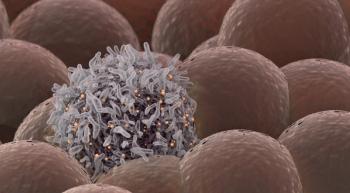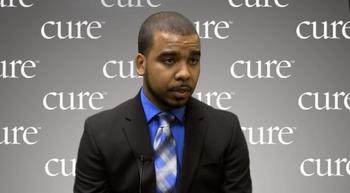
Yoga and Reiki can have great benefits for patients undergoing cancer treatment, according to Patrick Dempsey.

Yoga and Reiki can have great benefits for patients undergoing cancer treatment, according to Patrick Dempsey.

Patrick Dempsey, actor, cancer advocate and Breakaway From Cancer® Ambassador, sat down with CURE® to discuss how cancer impacted his life after his mother was diagnosed with ovarian cancer.

Cancer is a serious business. But who said it needs to be a business of seriousness?

PARP inhibitors are continuing to create buzz in the ovarian cancer space, both as single agents and in combinations that are currently being examined in clinical trials.

The Food and Drug Administration (FDA) approved Rubraca (rucaparib) as a maintenance therapy for women with recurrent epithelial ovarian, fallopian tube or primary peritoneal cancer who are in complete or partial response to platinum-based chemotherapy, according to Clovis Oncology, the company that manufactures the drug.

Despite exciting developments of PARP inhibitors over the years, limited knowledge exists in the mechanism of PARP-7 and its potential effect in targeted therapy for patients with ovarian cancer.

Following fertility clinic malfunctions in Cleveland and San Francisco, many patients who have or had cancer are facing devastating losses, leaving many questions in the wake of these events.

As checkpoint inhibitors have changed the treatment landscape for many cancers, three specific biomarkers identified a subgroup of women with cervical and ovarian cancer tumor types who may benefit from such therapies.

As more people in the United States become addicted or face opioid overdoses, health care professionals are starting to take a step back and re-evaluate their prescribing habits.

Although genomic profiling successfully identifies those with microsatellite instability status who may benefit from PD-1 inhibitor therapy, a vast amount of women may be missed if they are not also tested for high tumor mutation burden too.

Jaron Mark, M.D., a gynecologic oncology fellow at Roswell Park Comprehensive Cancer Center, discusses the opioid crisis, and the steps that his institution is taking to combat potential addiction in women who undergo surgery for gynecologic cancer.

PARP inhibitors are generating a lot of excitement in the field of ovarian cancer. But how, exactly, do they work? CURE spoke with one expert to find out.

Knowing which kind of therapy works best can help in determining the ideal cancer care for patients.

Despite the many advances in cancer care in recent decades, one aspect that hasn’t seen much improvement is the detection of ovarian cancer in its earliest stages. Finding the disease sooner could have a big impact on survival compared with what is experienced with later diagnoses.

“There has been a rapid expansion in the use of checkpoint inhibition in many solid tumor types,” lead author Emily Hinchcliff, M.D.

At the inaugural Ovarian Cancer Heroes gala, held in New Orleans ahead of the 49th Society of Gynecologic Oncology Annual Meeting on Women’s Cancers, four individuals — a physician, nurse navigator and two patient-turned-advocates — were awarded for the contributions they have made to increase awareness and advance research and education for ovarian cancer.

Oncologists explore neoadjuvant therapy, heated chemotherapy and PARP inhibitors to find the right treatment for women with ovarian cancer.

William J. Gradishar, M.D., discusses the potential surgical implications for a woman with breast cancer who tests positive for a BRCA mutation, and why it is important to be aware of this genetic information.

Chlamydia is the most commonly reported sexually transmitted infection in the United States, and women who contract it may be at an increased risk for developing ovarian cancer.

The agency determined the Personal Genome Service Genetic Health Risk (GHR) Report is accurate and can provide reproducible results.

In her talk, Hennessy will also emphasize the importance of educating patients about their cancers and care options, and of the need for physicians to consider treatments that go beyond the standard of care, including targeted medicines and clinical trials.

A drug that is used to treat leukemia may also have potential in treating an extremely rare kind of ovarian cancer called small cell carcinoma of the ovary, hypercalcemic type (SCCOHT).

Finding her way into a clinical trial took a lot of research for one patient with ovarian cancer. Now, she’s guiding others.

Rick Boulay, a gynecologic oncologist and classically trained singer, will host a performance to raise money for cancer charities.

After a cancer diagnosis and treatment, one may question when they will actually start to feel “normal” again, whatever that may be. The Ovarian Cancer Prognosis and Lifestyle (OPAL) study set out to help women with ovarian cancer to understand just that.